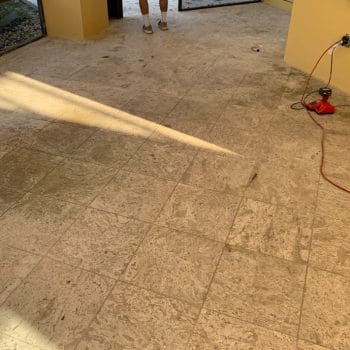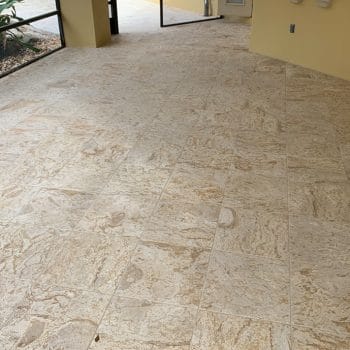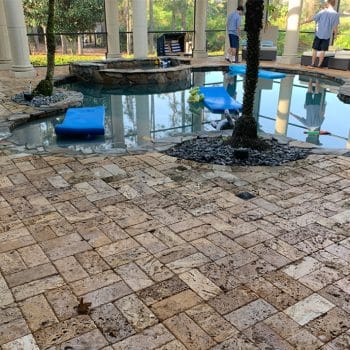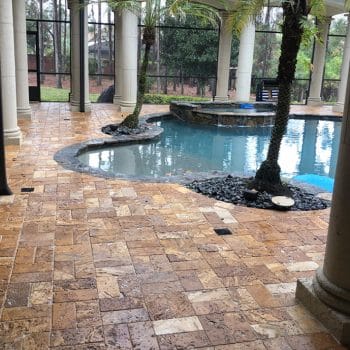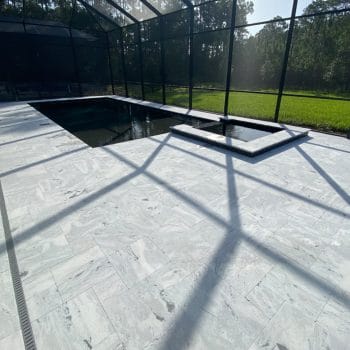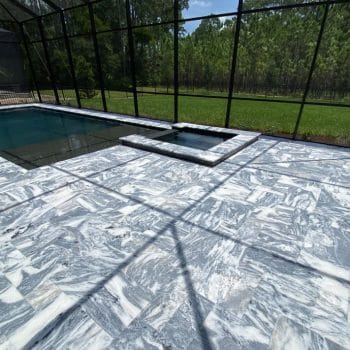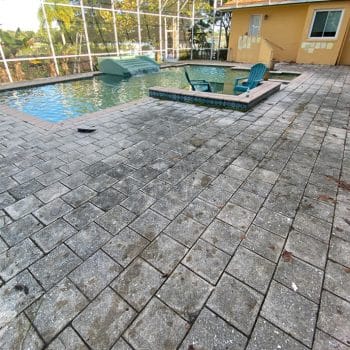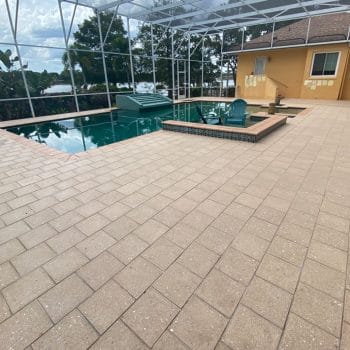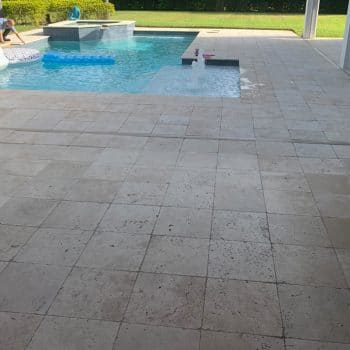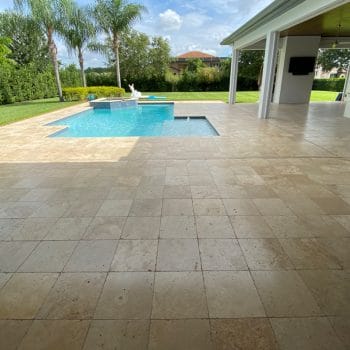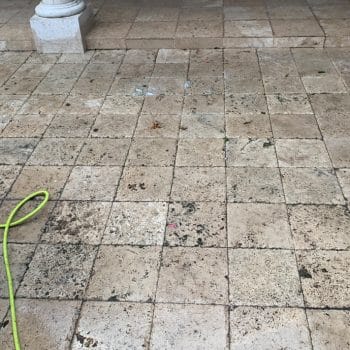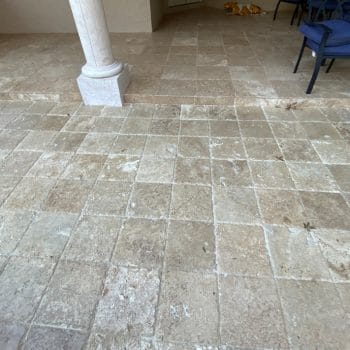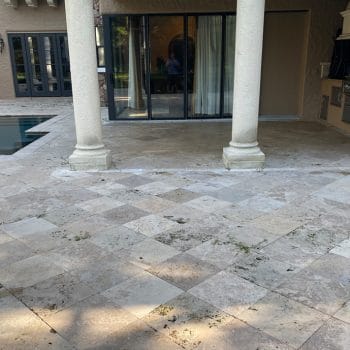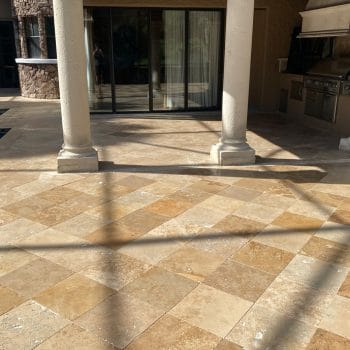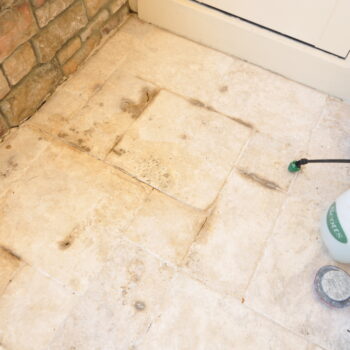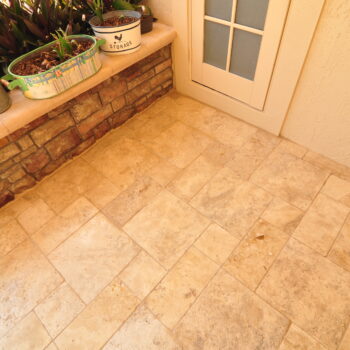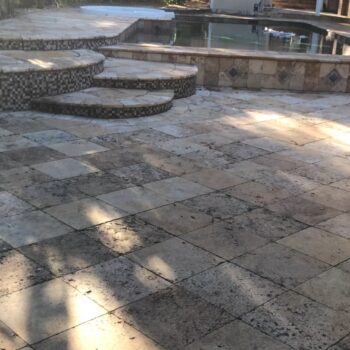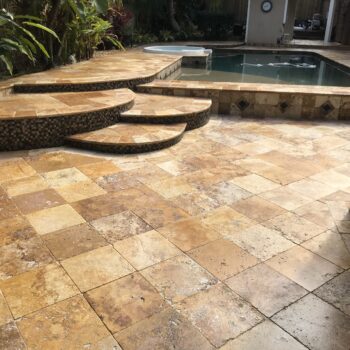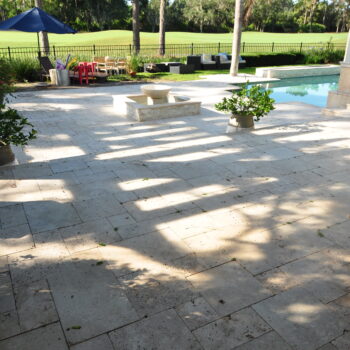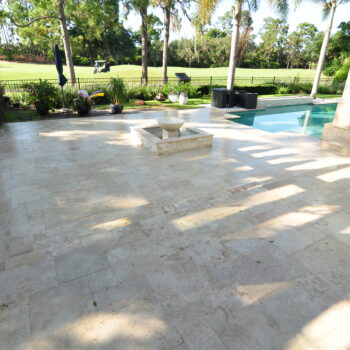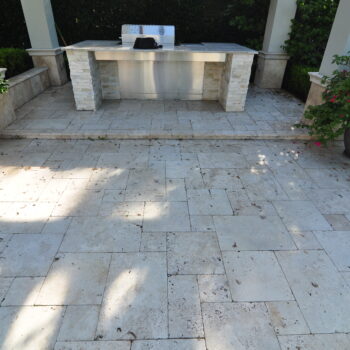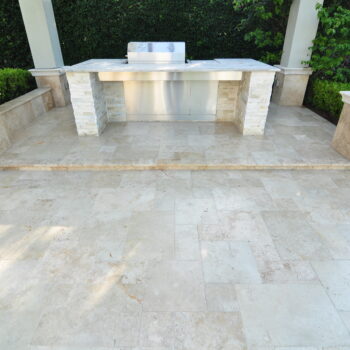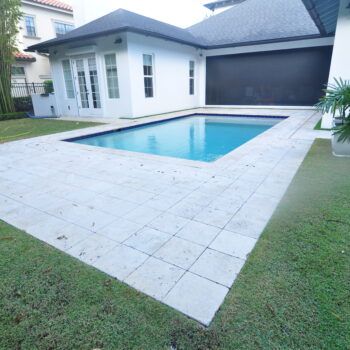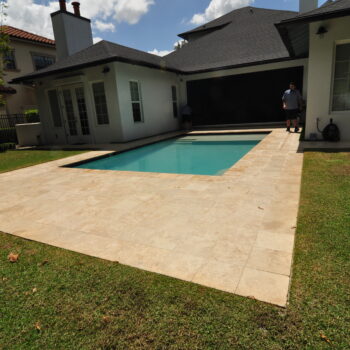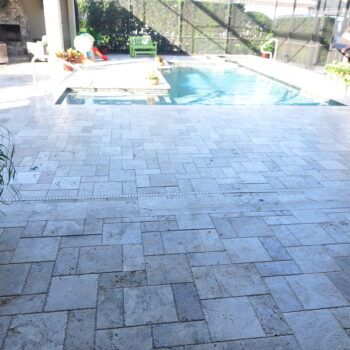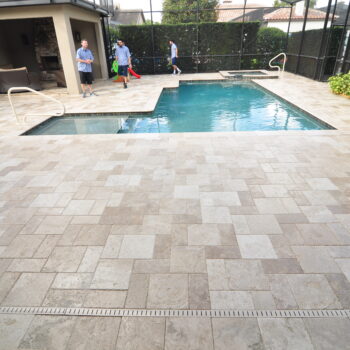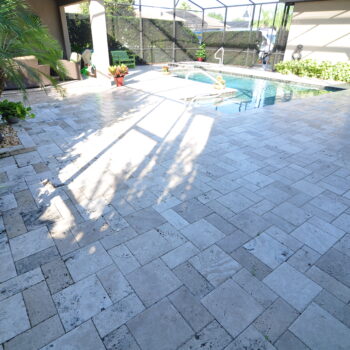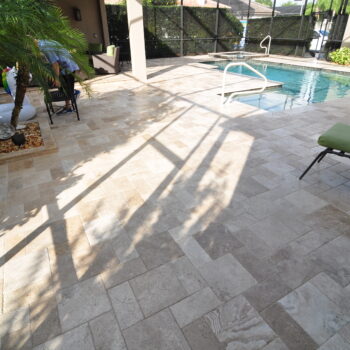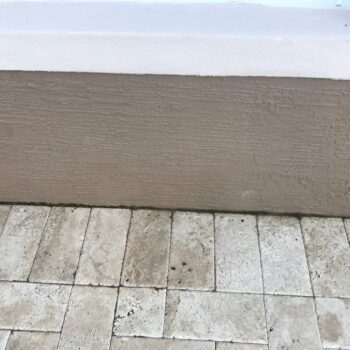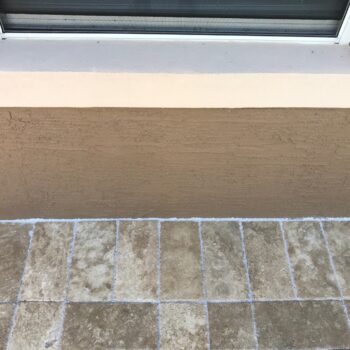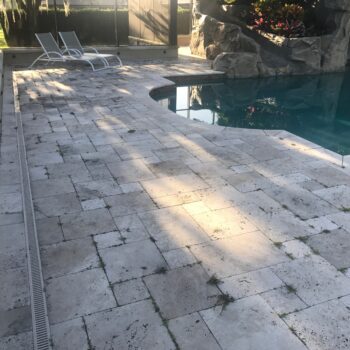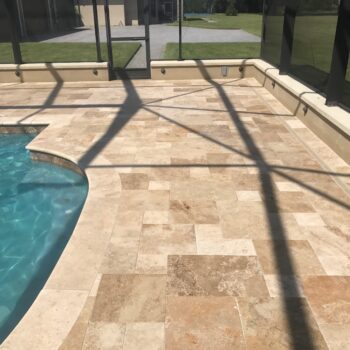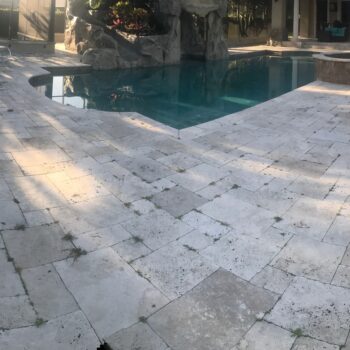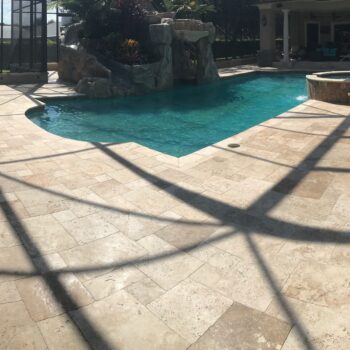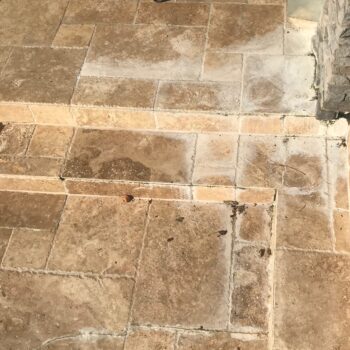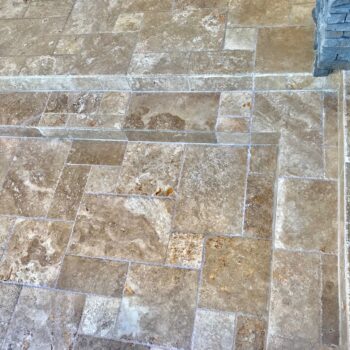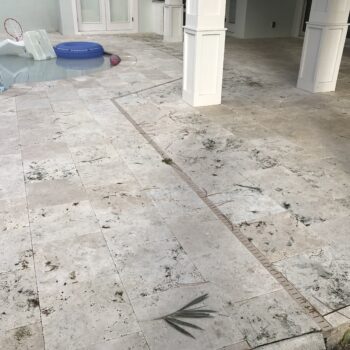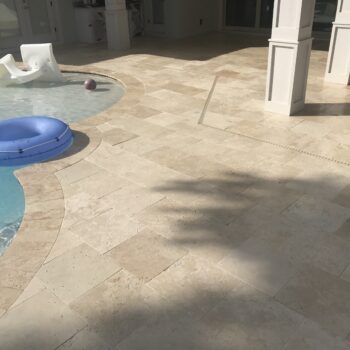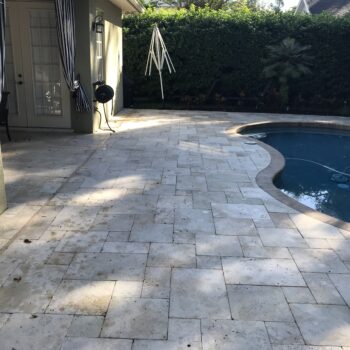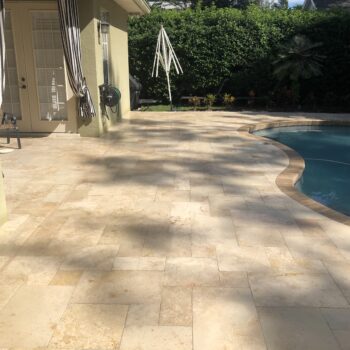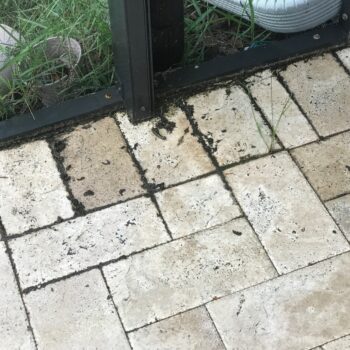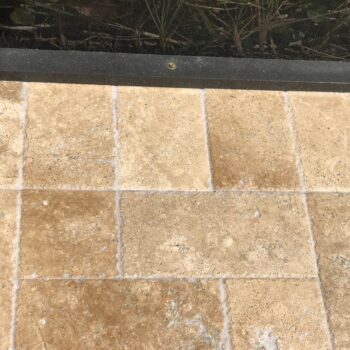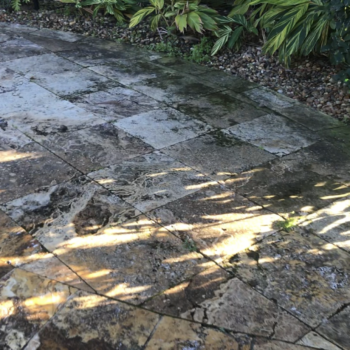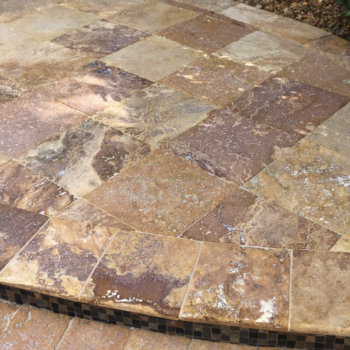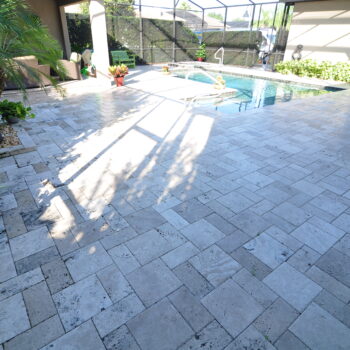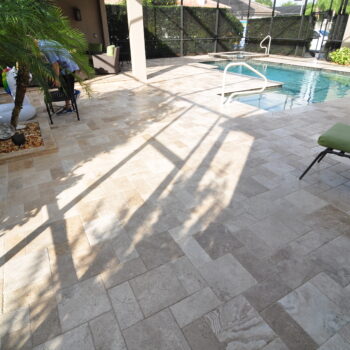Gallery-Mock-Up
We love restoring Travertine pavers around pool decks as much as we do diamond honing and polishing Travertine inside your home. We treat Travertine differently in an exterior installation as opposed to an interior as demands from each are much different. As you can see from the pictures, Travertine often provides the biggest difference once cleaned, sanded and sealed with Seal N Lock. Travertine is often used on pool decks because it comes in different colors, installation styles, and compliments pools beautifully.
After a year, however, you may start noticing some fading due to sunlight compared to covered areas. Also most travertine pavers are installed unfilled with a sand-set procedure, so any natural holes and pits will start to collect soils. Also the joints between the tiles may start to darken from mold/mildews and algae.
There are 3 basic types of sealer to consider in your exterior travertine restoration project.
The first is a impregnating, or penetrating sealer that soaks into the paver and provides repellency to water based soils and stains(hydrophobic). It will not change the color of the pavers (non enhancing type). It also will not do anything to lock, or harden the sand in the joints.
The second is an enhancing impregnating sealer. Products like Dupont Pro Enhancer sealer work great at darkening the travertine while providing a natural look. This product will not change the sheen level. The downside is that if your Travertine is exposed to direct sunlight, the enhancement will only last 1 year on average. (It says 15 years on the bottle, but in the real world, in our Florida sun, we have found that getting 1 year of enhancement is more accurate.) If you decide to go with this type of sealer, you will need yearly cleaning and resealing to keep the color enhancement of the travertine.
The third is a penetrating/ film-forming sealer. We use Seal N Lock wet look, and it is a 2-part, water-based urethane. The first advantage of this sealer is that it will enhance the colors of the pavers, meaning it will darken the paver like it has been wet with water. The second advantage is that it will harden and lock the sand in between the pavers, and if you have some deeper holes, it will also fill and harden the sand in the deeper holes. This helps keep all the soils/ molds/mildews/algae and other contamination closer to the surface. This will help keep the Travertine pavers looking cleaner longer. It will increase the structural integrity of the installation. The third advantage is the sealing capability of Seal N Lock. It forms a barrier between the Travertine and soiling and staining, so your Travertine looks cleaner longer. Porous Stone such as Travertine can absorb liquids, chemicals and spilled drinks. Sealing will prevent the absorption into the stone. This is especially true in areas of your deck that may not receive a lot of sun, or stay wet, as mold and mildew will gain hold and bloom under those conditions. Maintenance cleanings are much easier. The fourth advantage is increased shine. Most jobs we will apply 2 heavy applications that will achieve a low gloss appearance. We apply an aggregate in the last coat to mitigate the chance of slip and fall. Ask to see one of our sample pieces. The aggregate will leave a slight texture like fine sand paper. It will not be rough on the feet like some that will use actual sand. Depending on your individual level of shine goals, paver age, absorbency rate, texture, and how many coats are applied will dictate the finial sheen level. We typically recommend 2 coats that would provide a satin to low gloss depending on lighting angles and surface of the Travertine. Seal N lock allows vapor transmission, which is important in Florida so you do not trap moisture, possibly causing the classic white, or clouding of the pavers.
The process of restoring travertine pavers using Seal N lock is as follows:
- Repairs. See paver repair page. We can remove and reset sunken tiles using mason mix that will keep pavers from sinking again. If a mud set install and there are cracks, we can use a special resin that allows movement, and is UV stable to repair cracks.
- Stain treatments. As you can see in above pictures, hard water deposits, rust and iron stains from sprinklers will require a special process to remove.
- Deep cleaning. We use stone detergents and sodium hypochlorite(SH, Bleach) as needed to clean and treat the mold and mildew. We use hot water, high-pressure within a simultaneous vacuum recovery system that captures all the soils, molds, mildews and weeds. Unlike most systems, this process REMOVES, not just spreads all the soils. You want to keep any contamination of your pool water to a minimum. If a company is not using a vacuum-based system, where does all the dirt, mold and mildew go? In rare cases, grinding may be required (see job case studies) to open the stone to treat any stains. This is usually from extended neglect.
- Sanding. We use a hydro (water) compaction sanding method. This helps compact the sand in the joints and if pavers have any movement, or rocking, the sand locks them in place. In some cases it will fill voids under the Travertine. Please note, some line joints may not be able to be filled, as there is “no bottom”, or it is a perimeter joint that allows drainage.
- Sealing. Choice of sealers listed above. Often Seal N lock is the sealer we recommend to obtain our customers’ goals.
- Non-Slip. With our Seal N Lock application, we will use an additive and special process to mitigate slipperiness. This is a crucial aspect of any job, as we have gone to jobs that had aggregate, even sand, and it was so slippery. When I speak of slipperiness, it is usually when the deck is wet and you are barefoot, especially small children running around the pool. Mitigating slip and fall is a high priority when sealing exterior Travertine pavers. Everything else is secondary.
See more Travertine Restoration Services.




